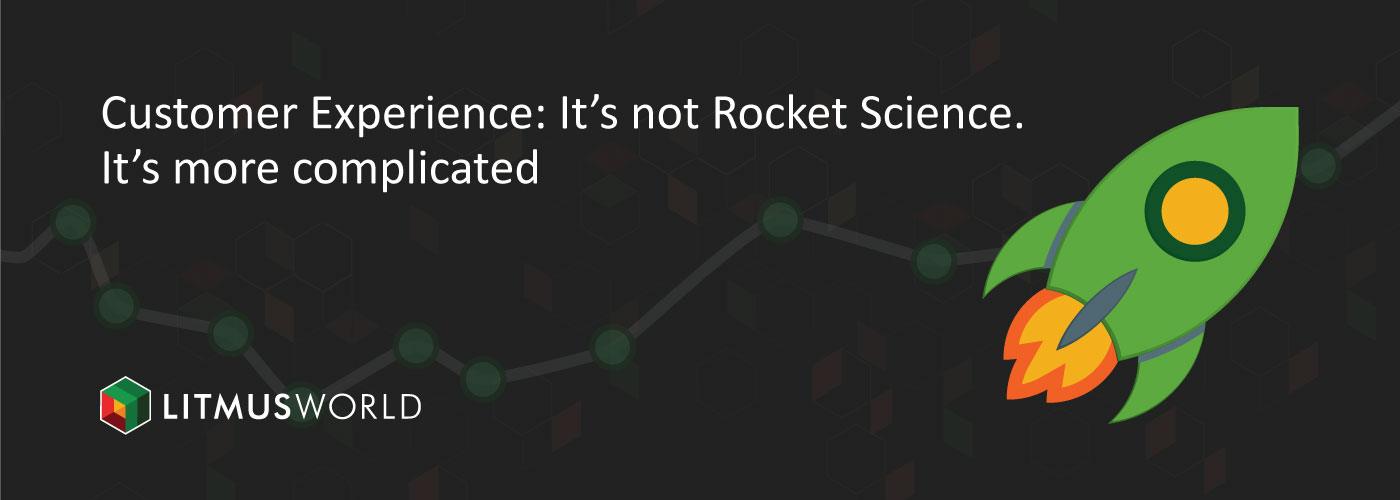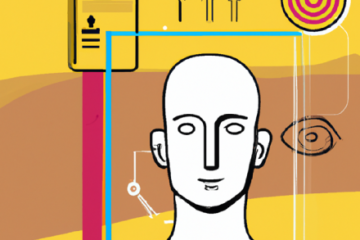Customer Experience: It’s not Rocket Science. It’s more Complicated.

Customer Experience: It’s Not Rocket Science. It’s More Complicated.
It is apparent in almost all markets around the world now that growth comes from keeping and growing current customers. Even in markets like India, the acquisition of new customers–both from competition and new-entrants through social mobility–is slowing down. This brings the importance of CX to the forefront across organisations.
Customer experience is not rocket science. It is more complicated.
So what has made it this way? A combination of classical silo-based organisation structures misaligned KPIs, disengaged and unempowered employees, lack of an all-encompassing customer-culture, escalating consumer expectations in the digital age–and most importantly, power in the hands of the customer through social media–has made customer experience difficult for the best of brands.
Why Some Companies Struggle to Deliver Strong Customer Experiences
Many organisations get it right in many touch points, but very few get it right across the customer journey. In fact, brands which have had customer experience disasters playing out in social media may have not been punished swiftly enough by customers. Often, that is a reflection of customers’ perception of the industry as a whole. For example, if the airlines you fly does not treat you well enough, and you continue to fly–it indicates one thing. You probably don’t think other airlines are doing well either.
Consider the following five reasons–just a few of many–why some companies struggle to get the customer experience right.
Reason #1: A Gap Between Customer and Company Perceptions
Consumers have expectations that are in variance with what the brand intends to deliver. Clearly this gap is deep-rooted in the design of products and services. As a well-known statistic from Bain & Co reveals, 80% of companies think they provide superior customer experience, yet only 8% of those same companies’ customers think they get a great experience. Also, consumers don’t necessarily derive their expectations from you alone–more so if you do not state the expectations explicitly. The best brands across categories are pushing the boundaries of customer expectations and that is a difficult driving force to handle.
Reason #2: A Lack of Coordination Between Teams
Many organisations still have a high dependency of call centres to deliver and address customer experience issues. If consumers, in general, have a choice, they would uniformly vote for the freedom never to talk to another call centre person in their lives. Today’s classical organisation structures have not evolved in an agile manner, even though technology and consumers are changing the environment. So organisations are built as functions or touchpoints or silos, while consumers always think of their experience as journeys. A great experience involves multiple functions working seamlessly–something that rarely happens. So when a customer gets handed over from one function to another, there is an obvious chance of experience gaps. This is a difficult problem to solve–but this is where the next point comes in and should compensate for any systemic gaps.
Reason #3: Gaps in Frontline Empowerment
Your frontline interface–digital or employee–needs to be highly engaged and enabled each and every time to deliver the experience. They can ideally anticipate and overcome any gaps that arise. Asymmetry of engagement is created when the transfer of enthusiasm is not passed on to every interaction.
Reason #4: Missing the Big Picture
Consumers consider the entire journey to assess their experience since that is what they are interested in. However, organisations frequently break it down to segments called touchpoints and evaluate individual touchpoint performance.
Reason #5: Not Focusing on Customers’ Evolving Needs
When you do get the entire orchestra playing well, you have the issue of evolving consumer needs. Consider the cases of Nokia or a Blockbuster both great brands at their peak who lost the race when they did not change with the changing needs of the consumer.
Most of these issues are complex and don’t have easy solutions. But that should not stop organisations from building, breaking and fixing current models to pave way for new breakthroughs. Creating “chief digital officers,” “internal hackathons,” and “venture arms for innovation” are some of these efforts which drive change. Even though many of them may be considered tokenisms, they do bring about short-term change.
A Customer-Centric Culture is Essential
Do you have an powerful customer culture in your organisation? Such a culture breaks organisational hierarchies, rallies employees to passionately holds the customer experience as a driving force, and creates an overall virtuous loop as originally defined in the “service-profit-chain” Harvard Business Review article in the 1980s.
The one example of an outstanding customer-experience driven and branded program is DHL Express. Every employee (and they have more than 100,000) is a “Certified International Specialist” and has gone through many hours of face-to-face training across functions and levels. This–along with their internal customer service war cry of “insanely customer-centric”–drives the entire organisation towards an incredible customer focus.
No, they do not have to enable organisation structures; nor do they have KPIs that draw focus only on customer issues. They also do not have cutting-edge technology to drive customer focus. What they do have is 100,000 ambassadors who frequently go beyond the call of duty to ensure customers are happy.
Can this be sustainable? Logically no, but then that is the power of a culture of focus that drives the organisation in one direction of motivated employees delivering great service quality.
I have heard a lot about the ‘Always Getting Better’ program of Ryanair–a wonderful example demonstrating that just even if you are a low-cost service provider, you do not necessarily need to compromise on service quality.
So what is your rallying tune? Fixing components of customer experience is an arduous journey. You can help the process along with a customer experience culture that drives elevating experiences through a customer-centric mission and values.
One statement of principle I especially admire is ‘customer takes precedence over all else, always’–a guiding statement from Titan, an Indian organisation that aims to make a positive impact on all people whose lives they touch.
Cutting Through the Complexity of Customer Experience
What can you do to cut through the complexity of customer experience?
You must proactively listen to the two key stakeholders, customers, and employees, and initiate actionable measures based on what you learn. In isolation, the voice of the employee (VoE) is inadequate to drive the requisite changes. Realising the full potential of VoE needs a systematic and integrated approach, where continuous conversations are aligned with objectives and are insightful and candid, where data is collated and analysed for key action, and where roadmaps are communicated with clarity.
And you must get the service profit chain back to work by leveraging technology. Today’s technologies make measurement, management, and analysis of stakeholder experience very simple. If you are not initiating contextual conversations with your customers and employees on a continuous basis, you will leave yourself following in the path of Blockbuster and Kodak who never saw through the customer’s behaviour.
Every organisation has the potential of becoming an enduring business leader that earns recognition for its commitment to customers. Don’t be deterred by the apparent complexity of customer experience. Instead, evolve your practices strategically and keep your customers’ needs in clear focus.


